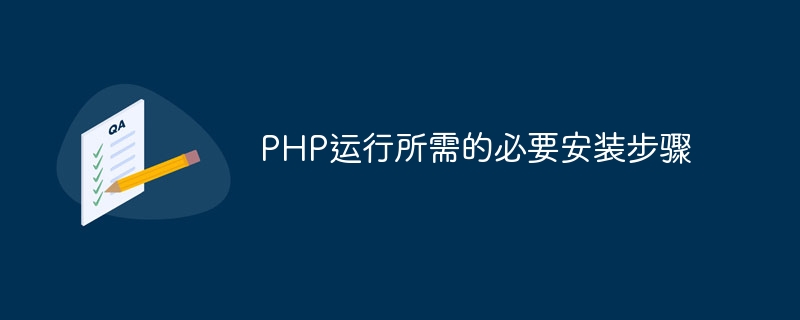

PHP is a popular server-side scripting language that is widely used to develop dynamic web pages and web applications. To run PHP scripts, a PHP interpreter needs to be installed on the server. This article will introduce the necessary installation steps required to run PHP, including specific code examples.
Step 1: Install the PHP interpreter
Before installing PHP, you first need to ensure that the server has the appropriate operating system and web server software installed, such as Apache, Nginx wait. The PHP interpreter can then be downloaded through the package manager or the official website. The following is a sample code to install PHP using apt package manager on Ubuntu operating system:
sudo apt update sudo apt install php
After the installation is complete, you can use the following command to check the PHP version:
php -v
Step 2 :Configure Web Server
After installing PHP, you need to configure the Web server to interpret PHP scripts. The following is sample code to configure PHP on the Apache server:
Add the following code in the Apache configuration file (usually in/etc/apache2/sites-available/000-default.confMedium):
SetHandler application/x-httpd-php
Then reload the Apache server:
sudo service apache2 reload
For the Nginx server, you can use the following configuration code:
Add the following code in the Nginx configuration file (usually In/etc/nginx/sites-available/default):
server { location ~ .php$ { include snippets/fastcgi-php.conf; fastcgi_pass unix:/var/run/php/php7.4-fpm.sock; } }
Then reload the Nginx server:
sudo service nginx reload
Step 3: Create PHP file And test
After you have installed and configured PHP, you can create a simple PHP file and test whether it is working properly. Create a file calledindex.phpin the root directory of your web server and add the following content:
After saving the file, access the server’s IP address or domain name (e.g.http://localhost/index.php), you should see the PHP information page, showing PHP configuration information, extension modules, versions, etc.
Summary
Through the above steps, you have successfully installed and configured PHP and can start writing and running PHP scripts. With further understanding and use of PHP, you can develop a variety of feature-rich web applications. I hope this article is helpful to you, and I wish you success on the road to PHP programming!
The above is the detailed content of Necessary installation steps required for PHP to run. For more information, please follow other related articles on the PHP Chinese website!




